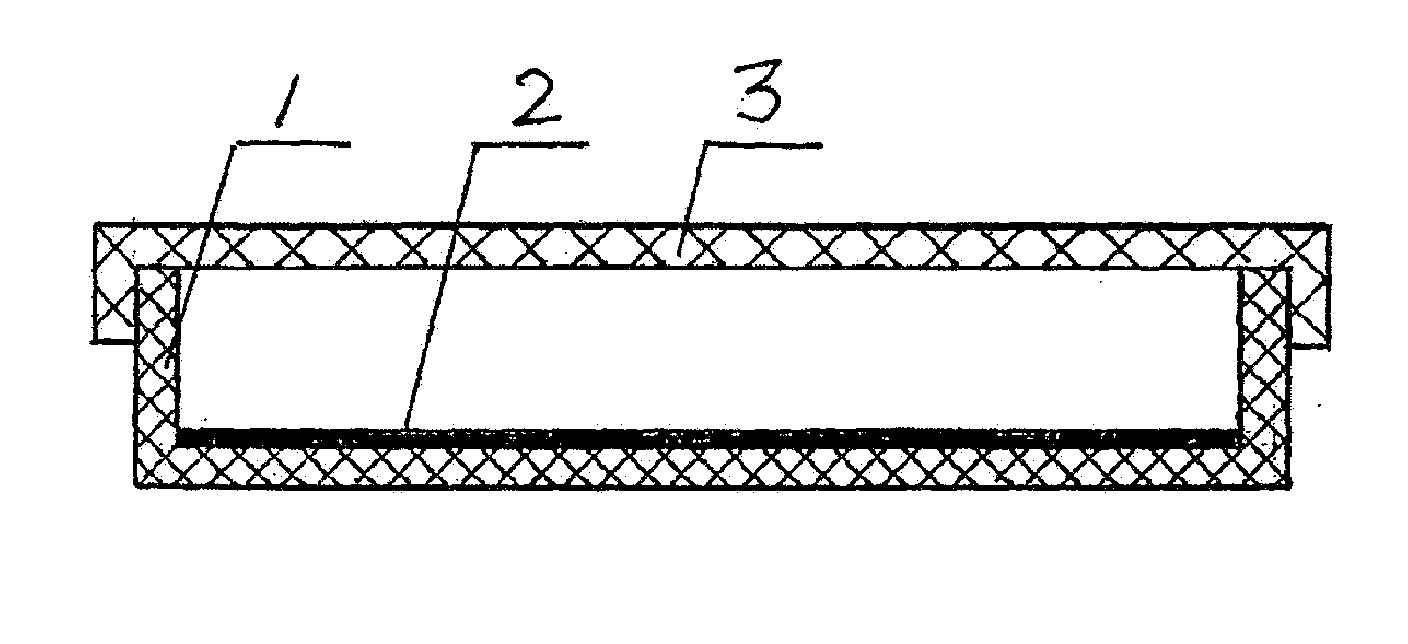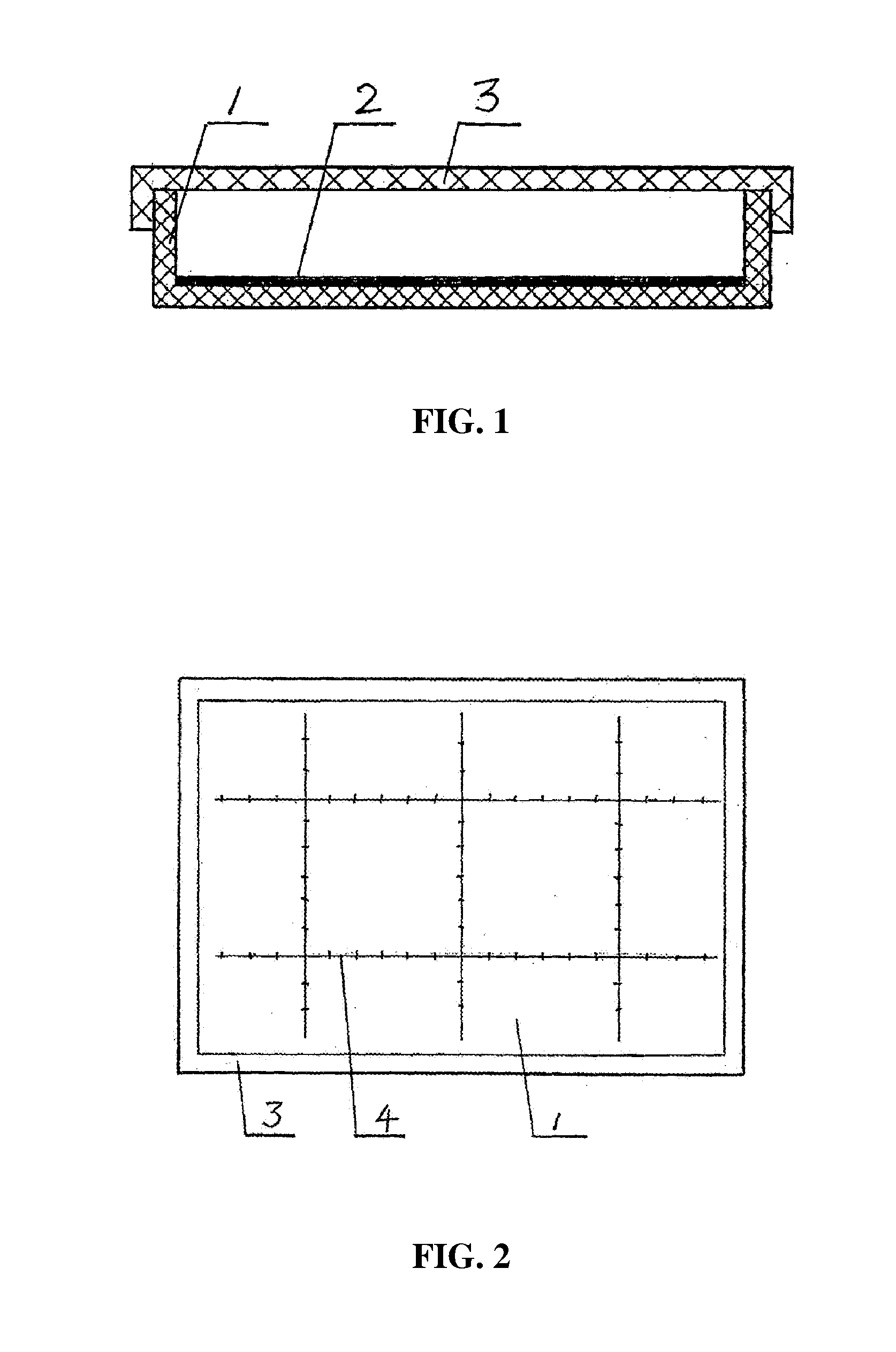Method for testing drug sensitivity and device used therefor
a technology for drug sensitivity and bacteria, applied in the field of bacteria drug sensitivity testing, can solve the problems of serious treatment consequences, short culture time, and loss of good treatment timing, and achieve the effects of short culture time, short time for multiplying or and saving or decreasing the time for culturing bacteria or cells
- Summary
- Abstract
- Description
- Claims
- Application Information
AI Technical Summary
Benefits of technology
Problems solved by technology
Method used
Image
Examples
Embodiment Construction
As shown in FIGS. 1 and 2, a box 1 comprises enclosed side walls and bottom and an open top. A coagulant aid layer 2 is disposed inside the box. The coagulant aid layer 2 comprises a slow-release carrier and a coagulant aid adhered thereto. A scale 4 is disposed at the bottom of the box 1, and a box cover 3 is disposed to cooperate with the open top of the box 1.
The slow-release carrier of the coagulant aid layer 2 is a slow-release membrane. When a culture solution is dumped into the box 1, the slow-release membrane is dissolved therein and the coagulant aid adheres to the membrane. Optionally, the coagulant aid is mixed with a carbohydrate and then the resultant mixture is sprayed onto the box 1 to form the coagulant aid layer.
The following, taking tubercle bacillus as an example, describes a method of drug sensitivity test and a device used therefor.
Using Ziehl-Neelsen staining method, microscopic examination showed the positive of acid-fast bacilli (4+) was greater than or equal...
PUM
| Property | Measurement | Unit |
|---|---|---|
| time | aaaaa | aaaaa |
| drug resistance | aaaaa | aaaaa |
| concentration | aaaaa | aaaaa |
Abstract
Description
Claims
Application Information
 Login to View More
Login to View More - R&D
- Intellectual Property
- Life Sciences
- Materials
- Tech Scout
- Unparalleled Data Quality
- Higher Quality Content
- 60% Fewer Hallucinations
Browse by: Latest US Patents, China's latest patents, Technical Efficacy Thesaurus, Application Domain, Technology Topic, Popular Technical Reports.
© 2025 PatSnap. All rights reserved.Legal|Privacy policy|Modern Slavery Act Transparency Statement|Sitemap|About US| Contact US: help@patsnap.com


